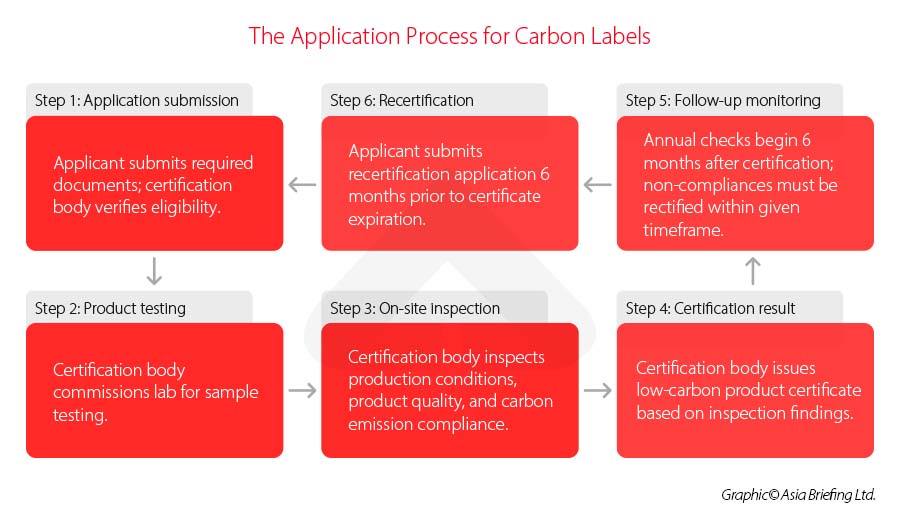Carbon Labeling on Products: Global Practice and Implementation in China
We discuss the evolution of carbon labeling systems in various countries, including China, and its significance within the framework of global climate action initiatives. Further, we examine why companies may be motivated to adopt carbon labels as end consumers become increasingly environmentally conscious and sustainable practices come under the ESG audit compliance lens.
The carbon label serves as a tool to quantify the carbon emissions generated throughout a product’s lifecycle – encompassing manufacturing, transportation, and disposal. As the global focus on climate change intensifies, carbon labeling is emerging as a valuable tool for businesses to quantify and communicate the climate impact of their products. The carbon label also provides consumers with a means to assess the climate impact of companies and brands they patronize and make conscious purchasing decisions. However, companies have recently been criticized for using carbon labelling as a method of greenwashing their businesses, such as in the fast fashion retail sector.
In this article, we discuss the evolution of carbon labeling systems in various countries, including China, and its significance within the framework of climate action initiatives.
What is carbon labeling?
Carbon labeling is an environmental labeling practice aimed at mitigating climate change, reducing greenhouse gas (GHG) emissions, and promoting low-carbon technologies. It involves quantifying the carbon emissions generated at various stages of a product’s lifecycle, including raw material extraction, processing, transportation, production, use, and disposal. This information is then displayed on the product to provide consumers with transparency regarding its carbon emissions.
The pioneering carbon labeling system was introduced by the Carbon Trust in 2007. Established by the UK government in 2001, the Carbon Trust supports businesses, governments, and financial institutions in their efforts to achieve decarbonization objectives by reducing carbon dioxide (CO2) emissions associated with their operations.
Manufacturers utilizing carbon labels are obligated to reduce the carbon emissions associated with labeled products, or risk losing the right to use the label. Carbon labels can be further categorized based on their specific achievement. The most encountered types of carbon labels include the following:
- Carbon Footprint Label: This label discloses the total carbon emissions across the entire lifecycle of the product or indicates the carbon emissions at specific stages of the lifecycle.
- Carbon Reduction Label: This label demonstrates the reduction of carbon emissions in relation to comparable products throughout their lifecycle.
- Carbon Neutral Label: This label signifies that the product has achieved carbon neutrality through carbon offsetting measures.
These labels provide valuable information to consumers, enabling them to make informed choices and support products with lower carbon footprints, thus contributing to the global efforts in addressing climate change.
Benefits of carbon labeling
Carbon labels offer numerous benefits to businesses and the environment, despite the absence of mandatory disclosure requirements. Many companies have voluntarily adopted carbon labels as a cost-effective and viable means to reduce their emissions. By doing so, they not only contribute to environmental preservation but also strengthen their business models by enhancing risk identification and capitalizing on opportunities within their processes and supply chains.
- Sustainable operations of business: Implementing carbon labels enables businesses to track and report their environmental impacts, particularly carbon emissions. This practice facilitates benchmarking progress, identifying areas for efficiency improvements, promoting comparability, and eliminating waste. Increased internal visibility allows companies to pinpoint stages with high levels of carbon emissions. Through reporting, producers can compare their products and services to industry standards, ensuring compliance or even surpassing them.
- Promoting consumer loyalty: By effectively communicating and quantifying environmental impacts, carbon labels establish trust with consumers and enhance their understanding of climate-related issues. Enlisting carbon labels that clearly demonstrate the comprehensive environmental footprint of a product allows companies to build a reputation among environmentally conscious consumers. This fosters loyalty and attracts consumers who prioritize sustainability.
- Positive impact on the green economy: Carbon labeling empowers consumers to make informed choices based on a product’s environmental impact. Simultaneously, it holds businesses accountable for monitoring and reducing their emission rates. This consumer-driven shift in the market encourages the demand for products with lower emissions, thus driving the growth of a greener economy.
By leveraging the advantages of carbon labels, businesses can not only contribute to a more sustainable future but also gain a competitive edge by aligning their operations with the values and preferences of environmentally conscious consumers.
Carbon labeling in different countries
Developed countries, such as European countries and the United States, have introduced carbon labels, which typically consist of basic designs incorporating footprints (representing carbon footprint), leaves (representing green and low-carbon attributes), and carbon emissions data.
| Country | Carbon label | Details of practice |
| UK | 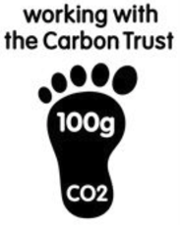 |
The carbon labeling program in the UK was launched in 2007, demonstrating a commitment to reducing carbon emissions and promoting sustainability. |
| USA |  |
Currently, there are various types of carbon labels in the United States, introduced by different companies, but there is no official carbon label system in place. This label on the left is one of them. |
| Germany | 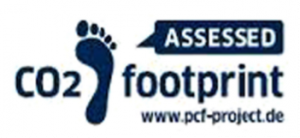 |
In 2008, the German Product Carbon Footprint Project implemented a public carbon labeling initiative. This label does not display specific numerical carbon emission data but indicates that the carbon footprint of the product has been assessed. |
| Switzerland | 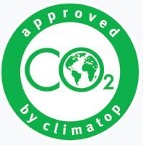 |
The first carbon label on products in Switzerland was developed by the non-profit organization Climatop in 2008. Its purpose is to provide customers with easy recognition of climate-friendly products. |
| Korea | 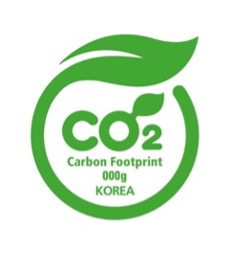 |
The carbon labeling system in South Korea has been in place since 2009. It involves a two-step process consisting of obtaining a carbon emission certificate followed by a low-carbon product certificate. |
| Japan | 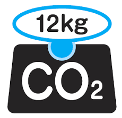 |
Japan initiated its carbon footprint program in 2008, aiming to accelerate the transition towards a low-carbon society. |
Identification of carbon labels in China
China began promoting the “Carbon Footprint Label” initiative in early 2018 when a pilot program was conducted in the electrical and electronic industry. The initiative was jointly implemented by the National Low-Carbon Certification Technical Committee, China Electronic Energy Saving Technology Association (CEESTA), and China Quality Certification Center (CQC).
The Carbon Footprint Label in China was developed under the leadership of the China Electronic Energy Saving Technology Association (CEESTA).
As shown in the diagram below, the numerical value indicated on the label represents GHG emissions generated at various stages of the product’s lifecycle, converted into the total CO2 emissions.
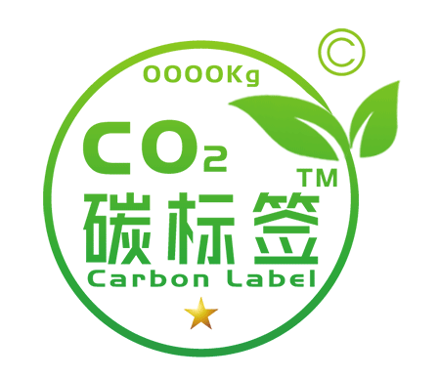
Government policies supporting carbon labeling
After the introduction of the “Dual Carbon” strategy in 2020, carbon labeling in China has experienced significant growth and development. The country’s central and local governments are collaborating on the development of standards and institutional frameworks for the initiative.
| Issued date | Policy document | Key point |
|
National level |
||
| September 2022 | Special Plan for Scientific and Technological Innovation in the Ecological and Environmental Field during the 14th Five-Year Plan | The development of carbon label evaluation criteria for solid waste resource utilization products and primary products is targeted at key products, such as plastic packaging and automobiles. |
| August 2022 | Development Plan for Certification, Accreditation, Inspection, and Testing during the 14th Five-Year Plan | Establishing a comprehensive certification system for ecosystem carbon sinks, including forest certification, and standardizing the provision of certification services for carbon footprints, carbon labels, and other related areas. |
| April 2022 | Implementation Plan for Establishment of Carbon Emission Accounting and Reporting System | Enhancing carbon accounting for products, exploring the establishment of a carbon labeling system, and promoting emission reductions across the entire supply chain. |
|
Local level |
||
| December 2021 | Guangdong Province: Opinions on Accelerating the Establishment of a Sound Green, Low-carbon, and Circular Economic Development System | Exploring the establishment of a carbon labeling system, improving the promotion mechanisms for energy-efficient household appliances, water-saving appliances, green building materials, and other green products.
Collaborating with Hong Kong and Macao to conduct research and pilot applications of a mutual recognition mechanism for carbon labels. |
| August 2021 | Jiangsu Province: Consumer Promotion Plans in the “14th Five-Year Plan” | Promoting the effective supply of energy-saving and water-saving products, recycled products, green building materials, and green home products.
Implementing green management throughout the product lifecycle. Encouraging the implementation of “carbon label” certification. |
| July 2021 | Zhejiang Province: Construction of Global Advanced Manufacturing Base in the “14th Five-Year Plan” | Establishing a system for green product standards, certification, and labeling, and increasing support for green procurement.
Conducting pilot projects for carbon label certification of exported products from manufacturing enterprises. |
Related regulations and standards
In 2015, the National Development and Reform Commission (NDRC) and the General Administration of Quality Supervision, Inspection, and Quarantine (AQSIQ) collaborated to establish the “Administrative Measures for Certification of Energy-saving and Low-carbon Products“. This initiative aimed to regulate and manage the certification processes for energy-saving and low-carbon products in China. The measures explicitly mandated that third-party independent certification bodies should handle the certification of low-carbon products.
Subsequently, in 2019, the State Administration for Market Regulation (SAMR) formulated and issued the “Administrative Measures for the Use of Green Product Labeling.” These measures outlined the joint implementation of the low-carbon certification system by the SAMR and relevant departments of the State Council. Certification bodies were instructed to conduct certification activities in accordance with the specific certification rules and evaluation criteria defined in the corresponding system. This development marked the formal integration of low-carbon product certification into the broader management framework of green product labeling.
China currently has over 100 authorized carbon label evaluation agencies (the list of these agencies is available here). According to the CEESTA, the application process for carbon labels mainly includes six steps, as shown below.
Outlook of carbon labeling in China
Currently, the carbon labeling business in China is experiencing active growth. In early 2022, the CEESTA officially released the “General Guidelines for Carbon Label Evaluation of Enterprises” (T/DZJN75-2022), which propelled the development of carbon labeling in the country’s electronics industry.
Simultaneously, other industries, such as textiles, apparel, and daily consumer goods, are also accelerating their exploration of carbon labeling initiatives. For instance, in May 2022, the Global Carbon Label Product Online Expo was successfully held in Beijing, showcasing a wide range of products from various sectors, including textiles, machinery and equipment, food, electrical appliances, electronics, and agricultural products.
Moreover, Carbon Trust has partnered with China Standard Conformity Assessment Co., Ltd. (CSCAC) and successfully registered with the SAMR in China. They have officially launched Carbon Trust’s carbon labeling services in the Chinese market. These services encompass six categories – carbon footprint, carbon reduction, low-carbon and carbon neutrality, low-carbon packaging, and carbon-neutral packaging.
The presence of Carbon Trust, an internationally recognized and credible organization, in China, will facilitate better fulfillment of foreign clients’ certification requirements related to sustainability. With the increasing emphasis on carbon neutrality in China, carbon labeling will aid international brands in establishing a stronger presence in the Chinese market and leading the green upgrade of supply chains.
Notably, the development of the carbon labeling system in China encounters several challenges that should be acknowledged:
- Cost barrier: The process of carbon footprint accounting and carbon labeling incurs relatively high expenses, which hinders proactive engagement from businesses in adopting carbon labeling practices.
- Lack of standardization: The existing methods for calculating product carbon labels lack uniformity and standardization. In the absence of effective oversight and punitive measures, this situation may lead to an environment where inferior practices overshadow more robust and accurate ones.
- Insufficient industry guidelines: Many industries lack well-defined and standardized criteria for carbon labeling calculations and suffer from a shortage of corresponding professionals and knowledge resources.
Looking ahead, it is foreseeable that the Chinese government may establish comprehensive certification, evaluation, and management measures for carbon labeling that cover the entire product life cycle. The development of detailed regulations would provide clear guidance on the identification, types, standards, product catalogs, legal responsibilities, and regulatory frameworks related to carbon labeling. These initiatives would then facilitate the systematic implementation of carbon labeling practices across different sectors.
Until that happens, companies will likely opt for a mix of industry best practices and adopt strategies based on market branding requirements, voluntary ESG goals, client or parent organization’s expectations, and prevailing regulatory standards in export markets.
About Us
China Briefing is written and produced by Dezan Shira & Associates. The practice assists foreign investors into China and has done so since 1992 through offices in Beijing, Tianjin, Dalian, Qingdao, Shanghai, Hangzhou, Ningbo, Suzhou, Guangzhou, Dongguan, Zhongshan, Shenzhen, and Hong Kong. Please contact the firm for assistance in China at china@dezshira.com.
Dezan Shira & Associates has offices in Vietnam, Indonesia, Singapore, United States, Germany, Italy, India, Dubai (UAE), and Russia, in addition to our trade research facilities along the Belt & Road Initiative. We also have partner firms assisting foreign investors in The Philippines, Malaysia, Thailand, Bangladesh.
- Previous Article WeChat Enables Foreigners to Pay with Overseas Cards in China
- Next Article China’s Pulp and Paper Industry – Opportunities for Foreign Investors


